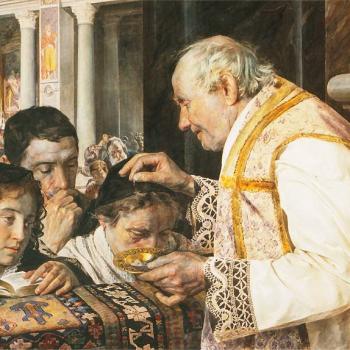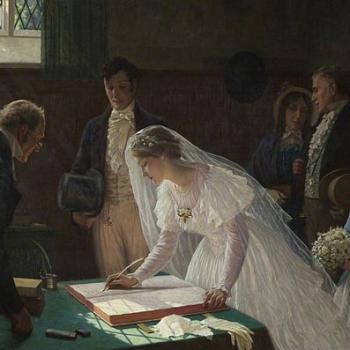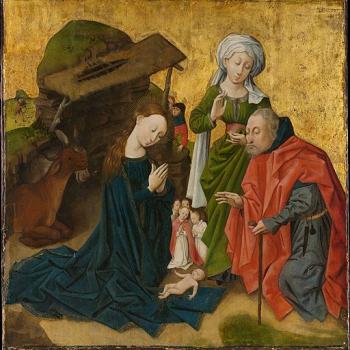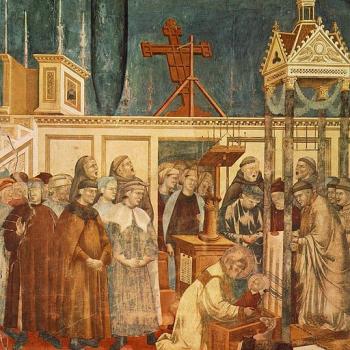Sandro Magister, religion columnist for L’Espresso in Italy, has been recounting a fascinating debate in Italy and Europe between Traditionalists and Pope Benedict (and his defenders) on the subject of Vatican II. The argument is about whether the “errors” of the post-Vatican II period are a consequence of misinterpreting the council or are inherent in the documents of the council itself. I use scare quotes on “errors” since the center of this debate seems shifted well to the right already, with no one represented (at least by Magister) as defending the substance of the post-conciliar period.
His most recent post is an article by a conservative theologian, Martin Rhonheimer. (Links to previous posts on this subject can be found in the introduction and at the end of the article.) He is a theologian and member of Opus Dei, best remembered for his recent arguments about aids prevention and condom use that attracted so much condemnation from the right. In this article, Rhonheimer defends two fundamental propositions:
1) The teaching of Dignitatis Humanae on religious freedom represent a fundamental discontinuity in Catholic teaching, as they mark a definite repudiation of Quanta Cura and the Syllabus of Errors.
2) That this discontinuity marks not a rupture, but rather a reform of the tradition, hearkening back as it does to the gospels and apostolic tradition, and only brushes away non-infallible teachings that are the result of historical contingency.
The point of the article is to defend Pope Benedict’s “hermeneutic of reform” (which Rhonheimer says is often misidentified as the “hermeneutic of continuity”) over and against the “hermeneutic of rupture and discontinuity” which the pope believes is a false interpretation of the council. For traditionalists, Dignitatis Humanae is prima facie evidence that Vatican II marked a rupture with the past, and therefore it (and all the work of the council) is doctrinally suspect. Rhonheimer advances a sophisticated argument to show that while this document is a significant break with earlier practice, it was not a rupture, but maintained an essential continuity on the level of doctrine, while admitting change on the level of social teaching.
I find his defense of the first point very strong. He summarizes it thus:
In the modern conception, after all, “freedom of conscience” meant above all freedom of worship, i.e., the right, in the contexts of public order and morality, of individuals and the various religious communities to live their faith and to profess it – publicly and communitarily – without impediment by the State. This is exactly what the first Christians asked during the age of persecutions. They did not demand that the State support religious truth, but asked only for the freedom to profess their faith without State interference. Vatican II now teaches that this is a fundamental civil right of the person – that is, a right of all people, regardless of their religious faith.
This right implies the abrogation of the earlier claim of the so-called “rights of truth” to political and legal guarantees, and the renunciation of State repression of religious error. However one views the question, the conclusion is unavoidable: precisely this teaching of the Second Vatican Council is what Pius IX condemned in his encyclical “Quanta cura.”
I am still contemplating his second argument (which is quite subtle) but on first reading I am not completely convinced by it. More precisely, I think he is too quick to dismiss Aquinas and the post-Aquinas arguments about the duties of the state to preserve and defend the faith as historically contingent and therefore not irreformable. I say this not because I believe or support these arguments but rather because they were widely held to be binding if not infallible. (See the Catholic Encyclopedia article on the Syllabus of Errors for a brief discussion.) For example, he writes:
Vatican Council II freed the Church from a centuries-old historical burden, the origins of which do not date back to the apostolic Tradition and to the “depositum fidei,” but rather to concrete decisions of the post-Constantinian era of Christianity. These decisions ultimately crystallized in canonical traditions and in their respective theological interpretations, with which the Church tried to defend its freedom, the “libertas ecclesiae,” from the incessant attacks of the temporal powers: one might think in particular of the medieval doctrine of the two swords, which, at the time, sought to justify theologically and biblically the understanding of the pope’s “plenitudo potestatis.” Nonetheless, over the course of the centuries, these canonical traditions and their theological formulations have changed their function and tone. Afterward and in the tradition of the confessional modern sovereign states, these became a justification of the ideal Catholic state, in which “the throne and the altar” existed in close symbiosis, and Catholic statesman zealously upheld the cause of the “rights of the Church” instead of the civil right to religious freedom. This symbiosis and this unilateral vision that led to clericalism and to a clerical society did not fail to obscure the authentic face of the Church.
In defense of this position he draws a number of distinctions, such as between “natural law” and “civil rights” or between the “interpretation” and “application” of natural law. These bear further reflection, but they have the flavor of someone attempting to have his doctrinal cake and eat it too.
Perhaps I am not so much unconvinced by his argument as by the fact that he does not develop, or even acknowledge, what seems to me to be an inevitable consequence of this historical treatment: a real need for the Church to exercise epistemological humility. At any given moment, we need to recognize that our understanding of the truth is limited and historically contingent, and that some interpretations may well be wrong and out of step with the truth of Christ as revealed by the gospels. We are still a pilgrim church, and at times we may only perceive the truth “as in glass darkly”. It would seem to me that in other areas–slavery, the death penalty, usury, the just war tradition–a similar degree of circumspection and humility is needed.















